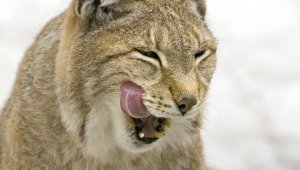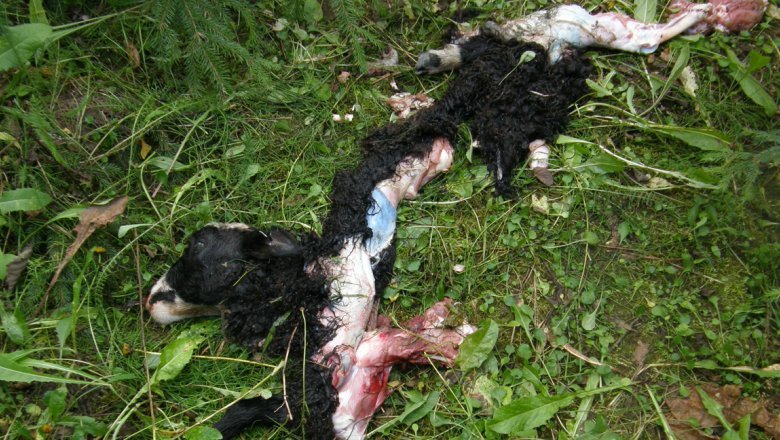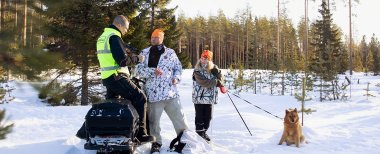Damages to domestic animals caused by large carnivores have been on the rise throughout the new millennium up until 2013. Most of this may be attributed to bears wrecking bee yards. These statistical increases may be partially connected to growing carnivore populations, but often a single animal can cause a big spike in statistics. There was a case in Sonkajärvi in 2007, for example, where a single bear caused over 70 000 euros worth of damages to bee yards over a number of separate incidents. The annual figure for damages caused to domestic animals has varied between 0.2 and 0.5 million euros in recent years, which only makes up less than one tenth of the total amount of paid large carnivore damages (this figure also includes reindeer damages).
Lynx
Most of the reported incidents where a lynx has attacked a domestic animal have had to do with sheep, although the sheep damages caused by the lynx are nowhere near as significant as those caused by the wolf. The lynx can also kill a yard dog, but usually if a dog gets attacked by a lynx it happens when the dog is out hunting small game and runs into a lynx by accident. Most often these encounters only result in a trip to the vet. The lynx also causes damage reports by attacking fowl and even cattle and horses.
Bear
Bears are universally known to love honey, and so over 60% of damages caused by the bear and over 70 % of compensations paid for bear damages are the result of bears helping themselves to the bounties of bee yards. Surrounding bee yards with electric fences will usually keep bears away, but it may only divert the problem to other, unprotected yards. The electric fence is definitely the most cost-effective way to keep bears away as the fences are inexpensive, effective and quick to set up.
Bears have also killed grazing sheep and even some horses that have been out on pasture. Fencing off sheep and horse pastures with an electric fence also works here to effectively prevent incidents. Occasionally, bears have been known to damage harvested crops by tearing open fresh animal feed bales and clamps. Electric fence materials may be purchased with state subsidies and acquired from the Finnish Wildlife Agency.
Treating a wounded animal
When a large carnivore attacks a domestic animal, it does not always lead to the animal's death. The animal may, however, need veterinary treatment if the predator bit, tore or scratched the animal. In biting cases the risk of infection must be taken into account and often a long-term prescription of penicillin is required. Small tears and wounds may heal by themselves, but larger gashes require stitching. If the injuries are very severe, it may be more merciful to put the animal down. Treatment expenses for injuries caused by large predators are compensated for as large predator damages and you should report each incident to your municipal agriculture secretary to file a damages claim.
A direct attack is not always necessary to cause damage: the predator may hurt animals simply by driving them wild in their enclosure. Some of the panicking animals may run at fences and hurt themselves that way, for example. Animals have also drowned when they have tried to escape from predators in a river, lake or other waterway. Pregnant animals might miscarry in a panicked state. Receiving compensation for these types of damages is often challenging. In order to document the predator's tracks one should contact the large carnivore contact person of the local game management association, as they are well versed in identifying large carnivore tracks. See the contact person's contact information (riista.fi).


